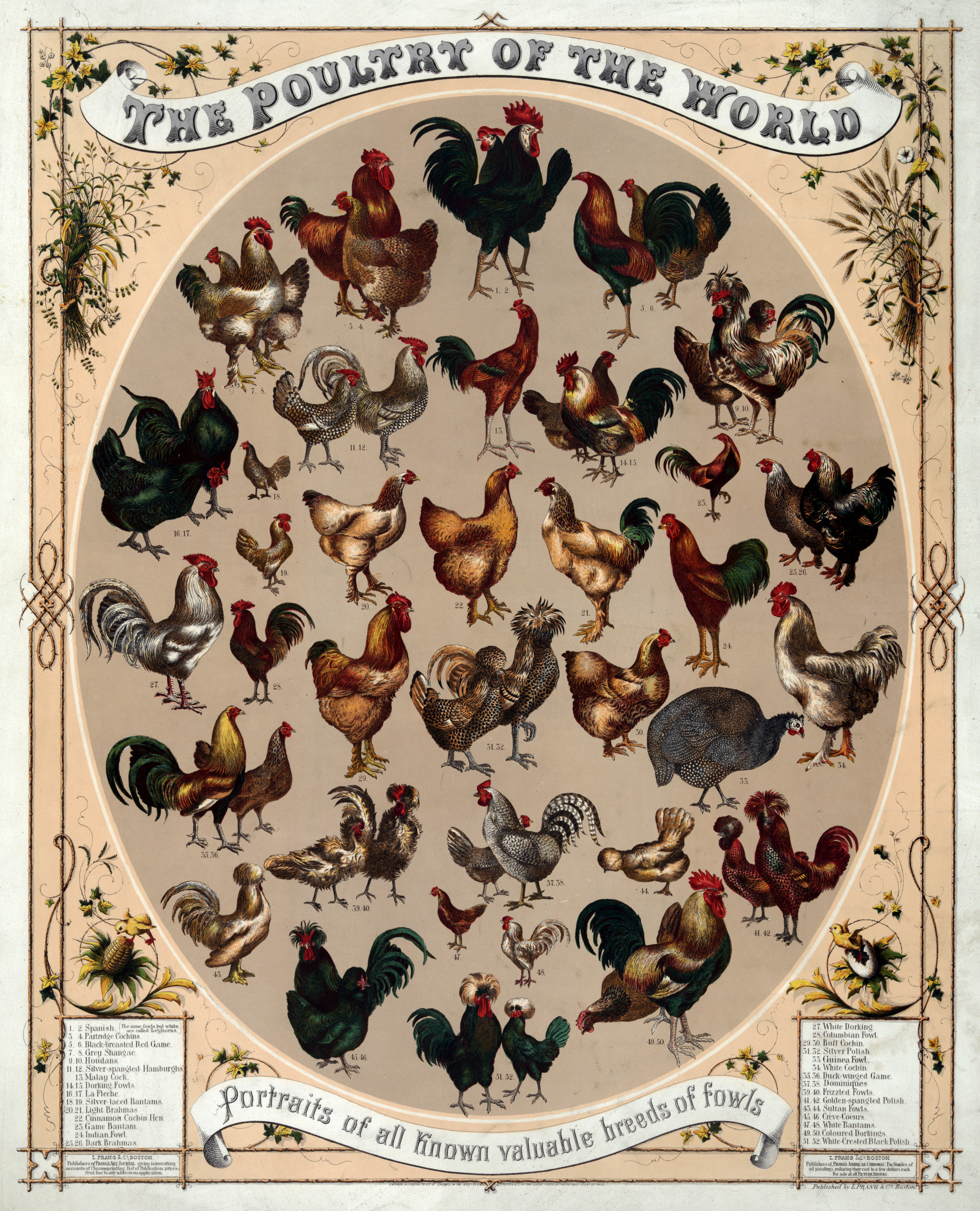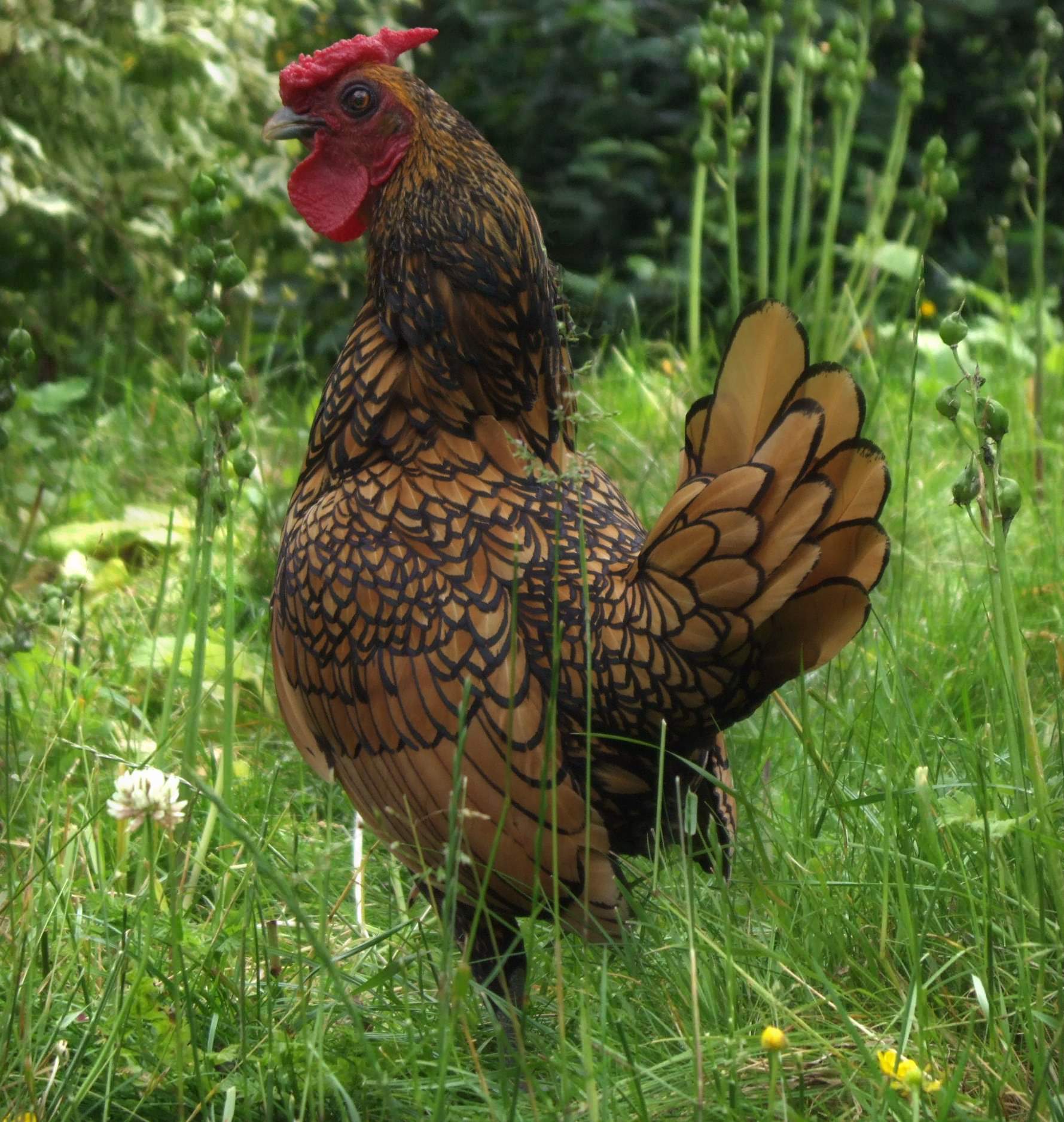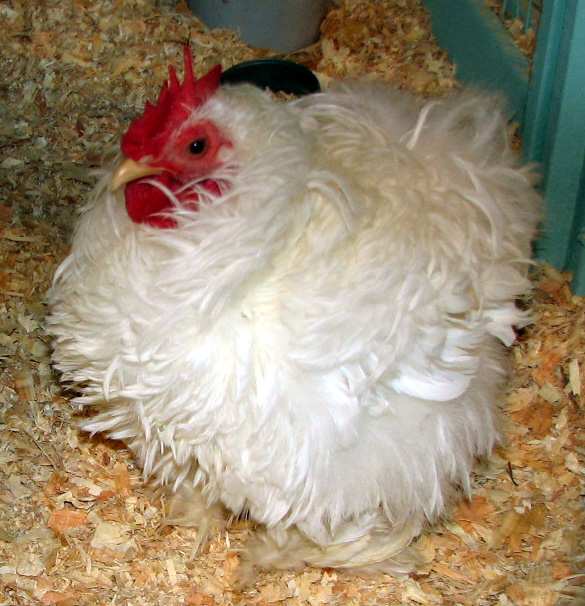|
Chabo
The Japanese Bantam or Chabo () is a Japanese breed of ornamental chicken. It is a true bantam breed, meaning that it has no large fowl counterpart. It characterised by very short legs – the result of hereditary chondrodystrophy – and a large upright tail that reaches much higher than the head of the bird. History The origin of the Chabo is unknown. Mitochondrial DNA evidence suggests that it, and all other Japanese breeds of ornamental chicken, derived through selective breeding from gamecock, fighting chickens, the ancestors of the modern Shamo (chicken), Shamo breeds. The earliest recognisable depiction of a Chabo in Japanese art dates from the beginning of the seventeenth century; a short-legged chicken with tall upright tail shown in the ''Portrait of Jacoba Maria van Wassenaer'' by Jan Steen, painted in about 1660, is believed to be a Chabo. Japan was effectively closed to all foreign trade from 1636 until about the time of the Meiji Restoration in 1868. The first ... [...More Info...] [...Related Items...] OR: [Wikipedia] [Google] [Baidu] |
Silkie
The Silkie, also known as the Silky or Chinese silk chicken, is a Chinese breed of chicken named for its atypically fluffy plumage, which is soft to the touch, like silk or fur. Other unusual qualities include black skin and bones, blue earlobes, and pentadactyly (five toes on each foot) – most chickens have only four. The birds are commonly reared for exhibition in poultry shows, and a number of color varieties have been bred: the Entente Européenne recognises ten plumage colors, the American Poultry Association seven, and the Poultry Club of Great Britain five. there are both bearded and non-bearded forms of most colours. In European countries both bantam and large fowl are recognised, while in the United States only the bantam is listed. Silkie hens show a strong tendency to broodiness, and are commonly used to hatch eggs from other breeds and bird species; as a result of the same tendency, they lay relatively few eggs. History It is unknown exactly where or whe ... [...More Info...] [...Related Items...] OR: [Wikipedia] [Google] [Baidu] |
Creeper Chickens
Creeper chickens are characterised by abnormally short legs, so short that the body is carried a few centimetres from the ground. This chondrodystrophy (dwarfism) is caused by a Lethal allele#Dominant lethals, dominant lethal allele, ''Cp''. A number of breeds display the characteristic, among them the Chabo and Jitokku breeds of Japan, the Courte-pattes of France, the Krüper of Germany, the Luttehøns of Denmark, and the Scots Dumpy. They have been called by many names, among them bakies, brevicrews, corlaighs, crawlers, creepers, creepies, dumpfries, dumpies and jumpers. History Creeper chickens have been known and described since Renaissance times at least. Chickens of this type were described and illustrated in the ''Monstrorum Historia'' of the Bologna, Bolognese naturalist Ulisse Aldrovandi (1522–1605), published posthumously in 1642 with text by Bartolomeo Ambrosini. In his ''The Variation of Animals and Plants Under Domestication'' of 1868, Charles Darwin writes ... [...More Info...] [...Related Items...] OR: [Wikipedia] [Google] [Baidu] |
Creeper Gene
Creeper chickens are characterised by abnormally short legs, so short that the body is carried a few centimetres from the ground. This chondrodystrophy (dwarfism) is caused by a dominant lethal allele, ''Cp''. A number of breeds display the characteristic, among them the Chabo and Jitokku breeds of Japan, the Courte-pattes of France, the Krüper of Germany, the Luttehøns of Denmark, and the Scots Dumpy. They have been called by many names, among them bakies, brevicrews, corlaighs, crawlers, creepers, creepies, dumpfries, dumpies and jumpers. History Creeper chickens have been known and described since Renaissance times at least. Chickens of this type were described and illustrated in the ''Monstrorum Historia'' of the Bolognese naturalist Ulisse Aldrovandi (1522–1605), published posthumously in 1642 with text by Bartolomeo Ambrosini. In his ''The Variation of Animals and Plants Under Domestication'' of 1868, Charles Darwin writes that creeper chickens were among ... [...More Info...] [...Related Items...] OR: [Wikipedia] [Google] [Baidu] |
Chicken Breeds
There are hundreds of chicken breeds in existence. Domesticated for thousands of years, distinguishable breeds of chicken have been present since the combined factors of geographical isolation and selection for desired characteristics created regional types with distinct physical and behavioral traits passed on to their offspring. The physical traits used to distinguish chicken breeds are size, plumage color, comb type, skin color, number of toes, amount of feathering, egg color, and place of origin. They are also roughly divided by primary use, whether for eggs, meat, or ornamental purposes, and with some considered to be dual-purpose. In the 21st century, chickens are frequently bred according to predetermined breed standards set down by governing organizations. The first of such standards was the British Poultry Standard, which is still in publication today. Other standards include the Standard of Perfection, the Australian Poultry Standard, and the standard of the America ... [...More Info...] [...Related Items...] OR: [Wikipedia] [Google] [Baidu] |
Japanese Bantam Cockerel
Japanese may refer to: * Something from or related to Japan, an island country in East Asia * Japanese language, spoken mainly in Japan * Japanese people, the ethnic group that identifies with Japan through ancestry or culture ** Japanese diaspora, Japanese emigrants and their descendants around the world * Japanese citizens, nationals of Japan under Japanese nationality law ** Foreign-born Japanese, naturalized citizens of Japan * Japanese writing system, consisting of kanji and kana * Japanese cuisine, the food and food culture of Japan See also * List of Japanese people * * Japonica (other) * Japanese studies , sometimes known as Japanology in Europe, is a sub-field of area studies or East Asian studies involved in social sciences and humanities research on Japan. It incorporates fields such as the study of Japanese language, history, culture, litera ... {{disambiguation Language and nationality disambiguation pages ... [...More Info...] [...Related Items...] OR: [Wikipedia] [Google] [Baidu] |
Bantam Chicken Breeds
Bantam or Bantams may refer to: * Bantam (poultry), any small variety of fowl, usually of chicken or duck Businesses * Bantam Books, an American publishing house * Bantam Cider, an American cider company * Bantam Press, a British publishing imprint * American Bantam, a 1935 car company, formerly American Austin Car Company Military * Bantam (military), a soldier shorter than 5'3" in the First World War ** 143rd Battalion (British Columbia Bantams), CEF ** 216th Battalion (Bantams), CEF * Bantam (missile), a Swedish 1950s anti-tank missile * BAT Bantam, a British 1920s biplane fighter aircraft * Northrop X-4 Bantam, an American prototype small twinjet aircraft * Douglas A-4 Skyhawk light attack aircraft, nicknamed Bantam Bomber Places * Banten (town), also written as Bantam, a port town on island of Java, Indonesia in the East Indies islands ** Banten Sultanate, or Bantam, 1527–1813 ** Banten, current province of Indonesia on territory of the former sultanate * Ba ... [...More Info...] [...Related Items...] OR: [Wikipedia] [Google] [Baidu] |
Wattle (anatomy)
A wattle is a fleshy Caruncle (bird anatomy), caruncle hanging from various parts of the head or neck in several groups of birds and mammals. Caruncles in birds include those found on the face, wattles, dewlaps, Snood (anatomy), snoods, and earlobes. Wattles are generally paired structures but may occur as a single structure when it is sometimes known as a dewlap. Wattles are frequently organs of sexual dimorphism. In some birds, caruncles are erectile tissue and may or may not have a feather covering. Wattles are often such a striking Morphology (biology), morphological characteristic of animals that they feature in their common name. For example, the southern and northern cassowaries are known as the double-wattled and single-wattled cassowary, respectively, and a breed of domestic pig is known as the red wattle hog, Red Wattle. Birds Function In birds, wattles are often an ornament for courting Sexual selection, potential mates. Large wattles are correlated with high testos ... [...More Info...] [...Related Items...] OR: [Wikipedia] [Google] [Baidu] |
Hen-feathered
Hen feathering in cocks is the occurrence of a genetically conditioned character in domestic fowl ('' Gallus gallus domesticus''). Males with this condition develop a female-type plumage, although otherwise look and respond as virile males. Hen-feathering in cocks is one of the typical characteristics of the Sebright Bantam, a breed established circa 1810, in accordance with the intentions of its creator, Sir John Saunders Sebright. Sexual dimorphism in plumage is very common in birds, particularly within Phasianidae where males are bigger and have brighter and more colorful plumage than females among other morphological differences. Cocks with hen-feathering Males of most chicken breeds distinguish from their females in having longer, sharp and more scalloped feathers in neck, hackle, saddle and wing bows. But in some breeds, like the fancy breeds Sebright and Campine and some game breeds like Pettai Madhirione can see males that have a plumage completely similar in all ... [...More Info...] [...Related Items...] OR: [Wikipedia] [Google] [Baidu] |
Frizzle-feathered
A frizzle refers to a plumage pattern in domesticated chickens ('' Gallus gallus domesticus'') characterized by feathers that curl outwards, rather than lying flat as in most chickens. The frizzle type is not a separate breed, but a variety within breeds. Though all breeds of chickens may be frizzled; it is most commonly seen in breeds such as the Cochin, Pekin, and Polish. Chickens with this pattern are sometimes referred to as frizzles. The gene which causes the frizzles' peculiar feathering is an incomplete dominant trait. Common Breeds Almost all breeds can be frizzled, but the most common are listed below: * Cochin * Polish * Silkie (Commonly referred to as "Sizzle") * Plymouth Rock * Buff Orpington Bantam Breeds: * Japanese Bantams * Pekin Genetics Research suggests that the frizzled phenotype comes from a mutation within the keratin gene ''KRT75''. A deletion that removed part of exon 5 and intron 5 ameliorated the splice site. This caused a 69 base pair del ... [...More Info...] [...Related Items...] OR: [Wikipedia] [Google] [Baidu] |
American Poultry Association
The American Poultry Association (APA) is the oldest poultry organization in North America. It was founded in 1873, and incorporated in Indiana in 1932. The first American poultry show was held in 1849, and the APA was later formed in response to the burgeoning need for an overseeing body to set standards for poultry breeds and to administer judging. A year after its foundation, the Association published the first '' American Standard of Perfection'', which to this day is the most widely used and respected handbook on poultry breed standards. The APA continues to publish and expand the ''Standard'', and aims to promote all aspects of poultry fancy by certifying official judges, sponsoring shows, fostering youth participation, and advocating for its members, in both the U.S. and Canada. The Poultry Standard of Perfection Once the APA was formed in 1873, they made it their first order of business to create a standard for American poultry breeds. Six members from the original m ... [...More Info...] [...Related Items...] OR: [Wikipedia] [Google] [Baidu] |
Entente Européenne
Entente, meaning a diplomatic "understanding", may refer to a number of agreements: History * Entente (alliance), a type of treaty or military alliance where the signatories promise to consult each other or to cooperate with each other in case of a crisis or military action * Entente Cordiale (1904) between France and the United Kingdom * Anglo-Russian Entente (1907) between the United Kingdom and Russia * Triple Entente, an informal understanding between the Russian Empire, the French Third Republic and the United Kingdom of Great Britain and Ireland, built upon the Franco-Russian Alliance (1894), the Entente Cordiale (1904), and the Anglo-Russian Entente (1907) ** Allies of World War I, sometimes referred to as "The Entente", "The Entente Powers", or "The Entente Forces" * Little Entente (1920–1938), between Czechoslovakia, Romania, and the Kingdom of Yugoslavia * Balkan Entente (1934–1938), between Greece, Turkey, Romania and Yugoslavia * Baltic Entente (1934–1939), betwe ... [...More Info...] [...Related Items...] OR: [Wikipedia] [Google] [Baidu] |
List Of Chicken Colours
{{bots, deny=Citation bot ...
Breeders and fanciers of chickens accurately describe the colours and patterns of the feathers of chicken breeds and varieties. This is a list of the terms used in this context. Self Self-coloured chickens are those which display one solid colour without patterning of any kind. Barred and cuckoo Columbian, belted Duckwing Laced Pencilled Mottled, spangled, mille fleur Black-tailed Black-breasted Others References Chickens Bird colours Chicken plumage patterns Poultry Chicken The chicken (''Gallus gallus domesticus'') is a domesticated subspecies of the red junglefowl (''Gallus gallus''), originally native to Southeast Asia. It was first domesticated around 8,000 years ago and is now one of the most common and w ... [...More Info...] [...Related Items...] OR: [Wikipedia] [Google] [Baidu] |





